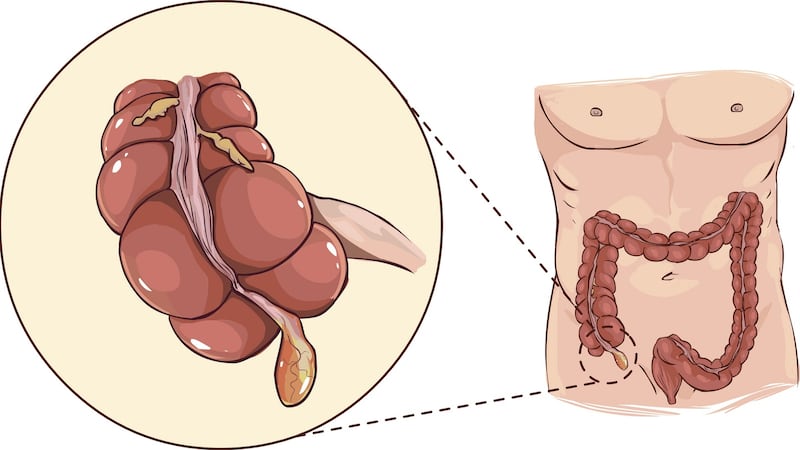If you develop appendicitis, try not to become unwell in the UK. This is the rather surprising message emanating from research published this month. And the advice is especially relevant to women.
A large scale review of data, published in the British Journal Of Surgery (BJS), found that thousands of people in the UK, particularly young women, undergo unnecessary surgery each year for suspected appendicitis.
As well as the 5,345 UK patients studied, the researchers collected comparative data from 120 hospitals across Italy, Portugal, the Republic of Ireland and Spain. The good news, from a narrow Irish perspective, is that normal appendicectomy rates were much lower in the European comparator countries than in the UK. These were 10.2 per cent in Europe versus 28.2 per cent in women in the UK, and 2.6 per cent versus 12.1 per cent in men.
A “normal appendicectomy” is where patients undergo surgery for suspected appendicitis but laboratory examination of the removed appendix finds it to be normal. The diagnosis of appendicitis remains challenging. As a result, overtreatment occurs, in the form of normal appendicectomy, which is associated with avoidable healthcare costs and postoperative complications.
A blind pouch, the appendix wins no prizes for good design. It is a fingerlike tube about four inches long that’s situated in the lower right side of the abdomen. At its opening into the gut, it is very narrow and is easily blocked. This leads to an initial inflammation of the appendix (appendicitis). Pressure builds up within, bacterial infection sets in, the appendix swells up and it eventually becomes gangrenous as its blood supply is cut off. If left untreated it then perforates, leading to peritonitis; the spread of pus and infection throughout the abdomen and pelvis.
First appendicectomy
The first reported appendicectomy was carried out by English army surgeon Claudius Amyand, who performed the operation in 1735. Despite modern advances, including the introduction of keyhole surgery and the availability of CT scans to help investigate the cause of abdominal pain, the accurate diagnosis of appendicitis remains an elusive goal.
One of the aims of the University of Birmingham researchers in the BJS paper was to examine whether existing risk prediction models could reliably identify patients with a low risk of appendicitis presenting to hospitals with acute abdominal pain.

A surprising finding was that most people who present with abdominal pain for suspected appendicitis don't have appendicitis," lead author Dmitri Nepogodiev told Medscape News UK. "So, there's a large number of people who are being admitted to hospital, being investigated, having to go through the whole experience, and are then being discharged, usually without having had any sort of treatment."
Why do more women than men present with appendicitis symptoms? It’s because, compared to men, there’s a bigger range of things that can cause right-sided tummy pain in females, such as menstrual pain, ovarian cysts, and other gynaecological problems.
The authors propose that all patients presenting with symptoms of appendicitis should be assessed using an appropriate risk prediction model such as the adult appendicitis score.
Scoring systems
“Using a standardised scoring system allows us to make sure that we’re looking at patients in an objective manner,” said Dmitri Nepogodiev. “The scoring systems aren’t perfect but what we have found is that if you have a low score, then the probability of you having appendicitis is very low.
“Of the low scoring women, only about 1 in 30 will have appendicitis. It really doesn’t make logical sense to admit 30 women for the sake of one of them potentially having appendicitis.”
What happens to the patients who are not operated on? A 2018 study concluded that six out of 10 patients who were treated with antibiotics for uncomplicated acute appendicitis remained free of disease for five years.
But we clearly need a more uniform diagnostic accuracy across Europe, which is why valid risk prediction models must be used.














